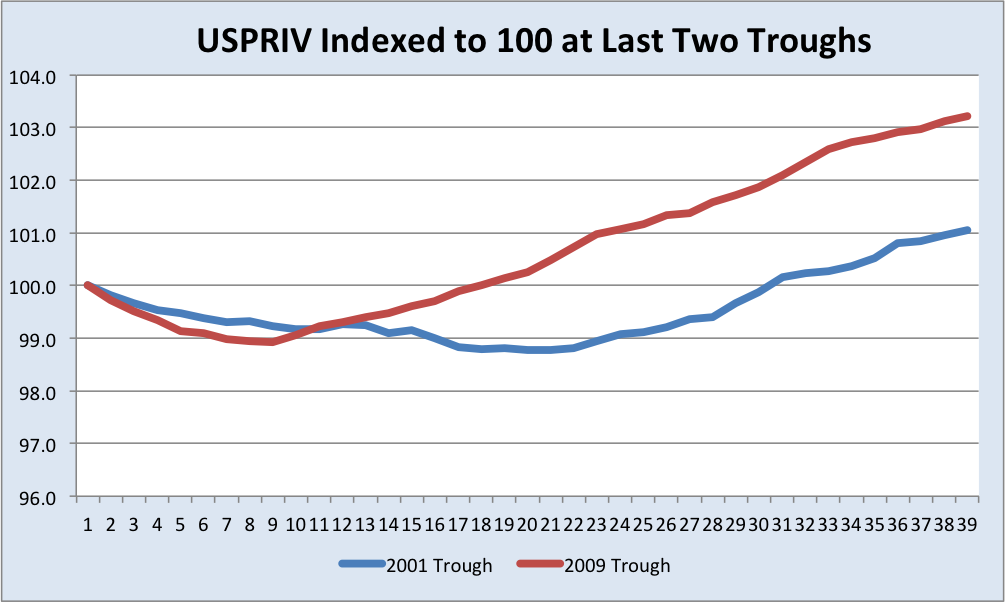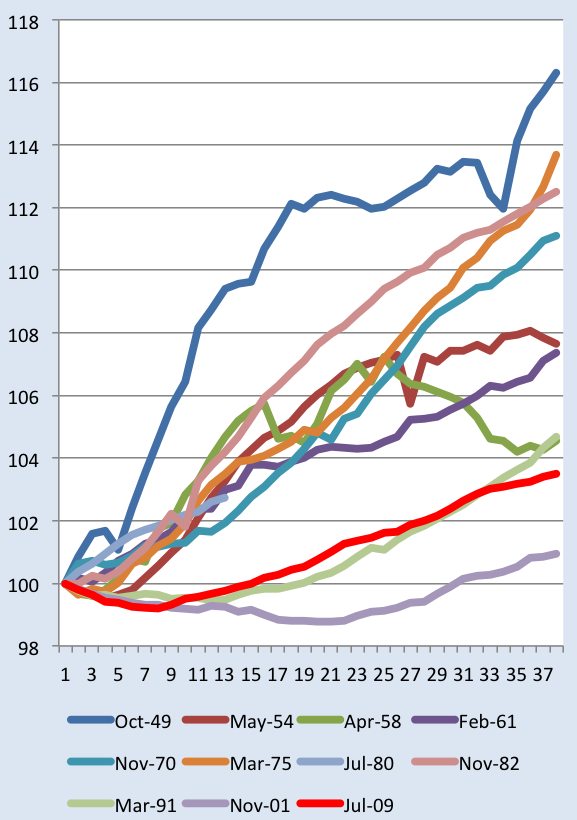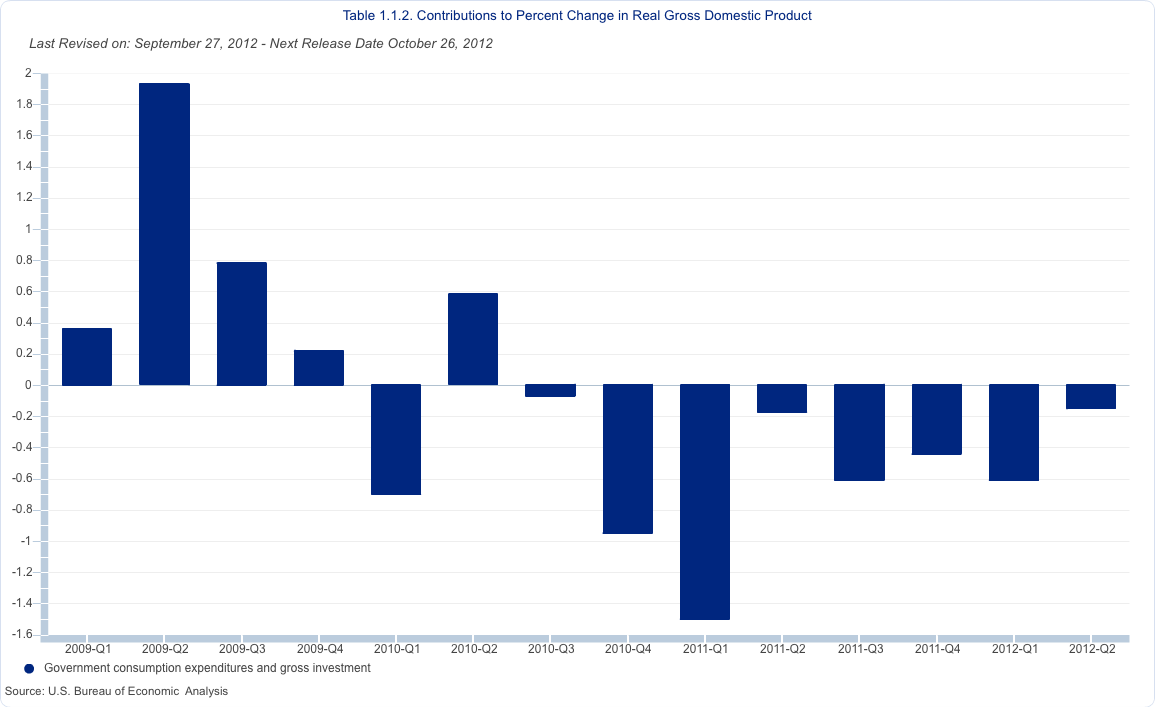Invictus (@TBPInvictus) here with a few random observations for your Saturday enjoyment while you sip your second cup of java.
~~~~
If you’re a subscriber to David Rosenberg’s Breakfast With Dave, you might have seen the chart below, which I posted Thursday on Twitter, in Friday’s note (share and share alike, I always say):
A break of this magnitude in Durables – that’s ex-aircraft – has in the past been a harbinger of of recession and a downturn in payrolls (I’ve used private payrolls, excluding government). BR laid out a similar warning on decaying economic conditions yesterday, offset only by the strength of monetary policies.
Two caveats on this:
- Durable Goods has a history (at least on FRED) limited to about 20 years, so we don’t have a lot of data.
- We did see a false positive in the period around 1999 or so.
On a related note, business activity fell into contractionary territory (ISM-Chicago, grey bars) for the first time in three years:
Another revision to GDP (down to 1.3 percent) was released on Thursday, and I note the following: Government spending has been a drag on GDP for what I believe is a record eight consecutive quarters:
For better (govt contributes to) or worse (govt detracts from), government is part of the GDP equation. One of the reasons we’ve gotten a string of crappy GDP prints is the fact that government continues to be a drag. This is indisputable. We can debate and discuss the appropriate role of government, but we cannot deny that it’s been a drag on GDP for the past two years.
Again – and this is not my first go-round on this type of intellectual dishonesty – the WSJ recently ran a misleading chart which was, not surprisingly, the work of the Heritage Foundation:
Misleading & Intellectually Dishonest Chart, from WSJ OpEd via Heritage

Note to the Journal (and Heritage): We measure recessions from economic peaks and recoveries from economic troughs (as determined by the NBER). This is not controversial. When you claim this is “the slowest recovery since the 1960s” while pegging your chart to the period “before the recession began 55 months ago,” you are (deliberately) misleading your (ever-dwindling) readership, just as you were the first time I called you out on it 18 months ago. Perhaps in the future, you can find a better model of economic analysis than Niall Ferguson.
The fact, as I’ve repeatedly demonstrated, is that this is not the slowest jobs recovery since the 1960s. In fact, the last jobs recovery was slower than this one:

(Source: FRED, USPRIV series, indexed to 100 at November 2001 and June 2009)
Here’s what an honest chart would look like (not much chance we’ll be seeing this anytime soon from the Journal). Note in terms of private sector job creation — one of the WSJ’s favorite recovery metrics — the present post credit crisis recovery is mediocre, but hardly the worst in post war history. In fact, its better than even the so-called Bush Boom which the Journal used to be so found of touting.
An Intellectually Honest Look at Private Payrolls During Recoveries

I’m sure I’ll be addressing this issue again in the not-too-distant future. Sadly, while misinformation like this is SOP for Heritage, it’s been disappointing to watch the Journal – once a top-flight publication – slowly lose its credibility under the Murdoch empire umbrella. To conflate “recession” and “recovery” – to use them interchangeably – takes either monumental ignorance of economic terms or a deliberate desire to mislead. Neither holds the Journal in particularly good stead.
Previously:
Attention WSJ OpEd: Correction Needed, April 2011
It Was the Best of Times. It Was the Worst of Times. Yup., Sept. 2010





What's been said:
Discussions found on the web: